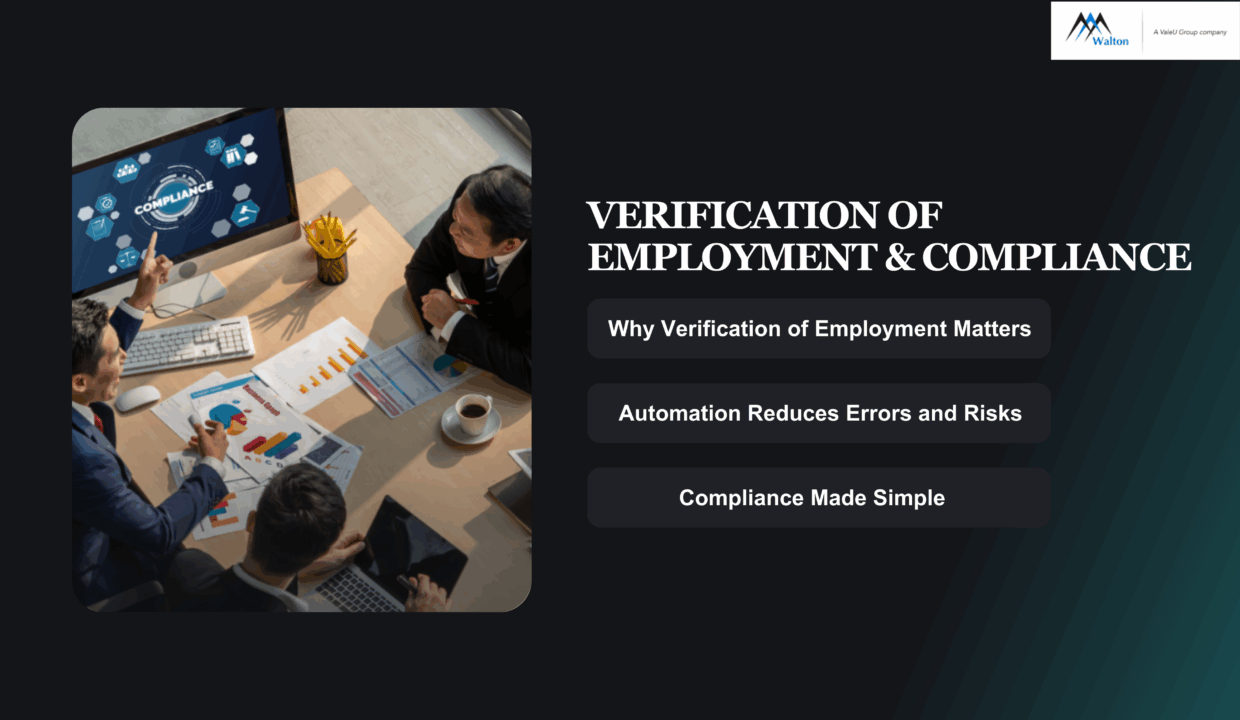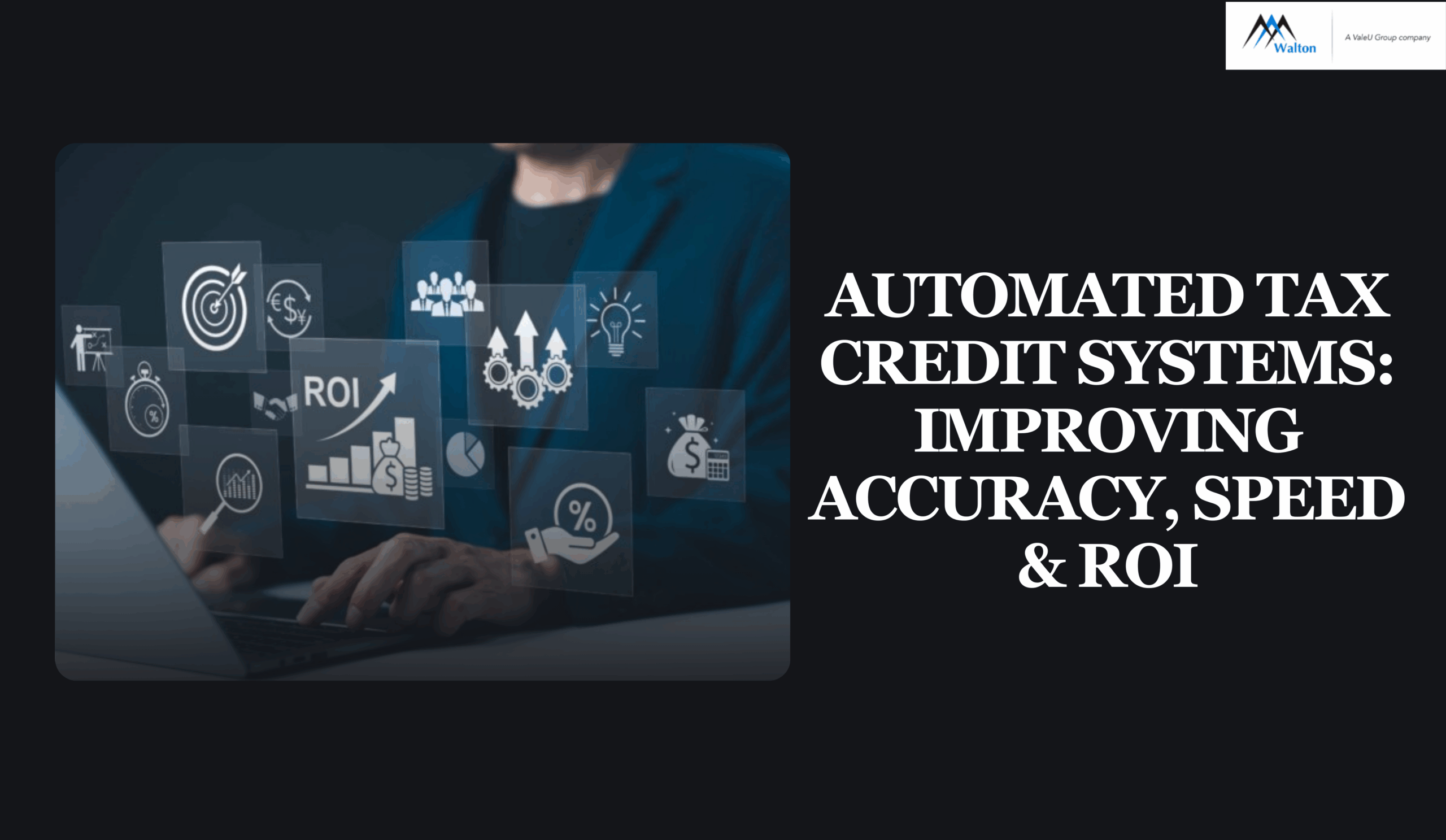Introduction
For employers, navigating the world of tax credits can feel like walking through a maze. Federal and state programs such as the Work Opportunity Tax Credit (WOTC) offer valuable incentives to businesses that hire from certain target groups, but claiming those credits requires precise documentation, accurate recordkeeping, and strict compliance with IRS rules. Traditionally, HR teams and finance departments have relied on manual processes, leaving room for errors, delays, and missed savings.
That’s where automated Tax Credit systems come in. By combining Payroll Software, Verification of Employment tools, and HR automation, these platforms streamline the entire process of identifying, capturing, and securing employer tax savings. Businesses that embrace automation not only reduce the administrative burden but also see measurable improvements in accuracy, processing speed, and overall ROI.
In this article, we’ll break down what automated Tax Credit systems are, how they work alongside Payroll Software and HR automation, and why modern employers are turning to them to safeguard compliance and maximize incentives, while also choosing the right VOE compliance solution for their organization.
What Are Automated Tax Credit Systems?
At our core, we understand automated Tax Credit systems as technology platforms designed to simplify and streamline the process of identifying, capturing, and securing employer incentives, in line with IRS requirements. These systems replace manual recordkeeping and paper-heavy workflows with intelligent automation, allowing HR teams and finance leaders to focus more on strategy and less on administrative tasks. Key benefits include:
Seamless Integration
We integrate automated solutions directly with Payroll Software and HR automation tools to pull real-time data on new hires, wages, and eligibility criteria, ensuring every employee is screened for potential Tax Credit opportunities during onboarding.
Efficient Verification of Employment
We automate the Verification of Employment process, confirming work status and eligibility for federal and state incentive programs, including the Work Opportunity Tax Credit (WOTC). This improves accuracy and creates a reliable audit trail that withstands IRS scrutiny.
Centralized Processes
We consolidate workflows into a single platform, replacing spreadsheets and disconnected tools with an integrated system where Payroll Software, HR automation, and compliance checks work in sync, improving efficiency and reducing administrative costs.
Key Benefits for Employers
Automated Tax Credit systems are not just about replacing paperwork; they are about creating measurable value for employers. When paired with Payroll Software, HR automation, and Verification of Employment tools, these platforms deliver tangible improvements in accuracy, processing speed, compliance, and ROI, while integrated HR tools make tax credit calculations simpler and faster, helping businesses save time and reduce errors.
Improved Accuracy in Tax Credit Processing
Manual filing often leads to errors: incomplete forms, incorrect employee data, or missed eligibility documentation. Automated systems pull information directly from Payroll Software and onboarding workflows, ensuring that every field is correct and up to date. This precision reduces costly mistakes and improves confidence in IRS submissions.
Accuracy also plays a vital role in WOTC compliance. Automated checks run employee data against federal and state criteria, minimizing the risk of overlooking qualifying hires. For employers, this means every eligible credit is captured without leaving money on the table.
Speed and Efficiency
Processing incentive applications by hand can take weeks, creating delays that slow down business operations. With HR automation integrated into tax credit workflows, employee eligibility can be screened in real-time during onboarding. This speeds up the entire filing process and helps businesses secure their credits faster.
Additionally, the integration with Payroll Software allows wage and employment data to be transmitted instantly, eliminating repetitive data entry and manual verification steps. By saving time, HR and finance teams can shift their focus to higher-value strategic work.
Boosting ROI on Tax Credits
At the end of the day, employers care about results specifically, the return on investment. Automated Tax Credit systems maximize ROI by:
- Identifying all eligible hires through automated screening.
- Preventing missed opportunities due to human oversight.
- Ensuring faster filing that accelerates employer tax savings.
By capturing every available dollar of incentives, companies can see significant increases in ROI. For example, businesses using WOTC automation often recover thousands in annual credits that would otherwise go unclaimed.
Strengthened Compliance
Finally, automation enhances compliance. Automated platforms generate audit-ready reports, store required documentation, and track changes across the employment lifecycle. This creates a secure digital paper trail that protects businesses in case of an IRS review.
Compliance is also closely tied to Verification of Employment, which confirms employee status and eligibility for credits. By automating this step, businesses reduce the risk of incomplete documentation and strengthen their defense against penalties or denied claims.
Integration with Payroll Software & HR Automation
One of the key advantages of modern automated Tax Credit systems is their seamless integration with Payroll Software and HR automation platforms. By connecting these tools, employers can streamline employee data management, eligibility checks, and reporting, resulting in significant time and cost savings.
Streamlined Employee Data
Payroll and HR platforms contain the critical information needed to calculate and submit tax credits, including hire dates, wages, and employment status. Automated tax credit systems pull this data directly from Payroll Software, eliminating manual entry and reducing the risk of errors. Real-time integration ensures that employee information is always current, which is essential for accurate Verification of Employment and IRS compliance.
Simplified Eligibility Checks
HR automation enables organizations to automatically screen new hires for tax credit eligibility during onboarding. This proactive approach ensures that employees who qualify for programs like WOTC are identified immediately. Automation also flags missing documentation or discrepancies, helping HR teams address issues before submission deadlines.
Efficient Reporting and Compliance
Automated systems generate reports and dashboards that integrate seamlessly with Payroll Software, allowing finance and HR teams to monitor tax credit activity across the organization. These reports include audit-ready records for Verification of Employment, ensuring that every claim meets federal and state requirements.
How Walton Management Supports Integration
Employers seeking a trusted partner for integration and optimization often turn to Walton Management Services for guidance. Walton helps businesses implement HR automation and integrate their Payroll Software with tax credit systems, ensuring that every eligible employee is identified and all documentation is accurate. Their expertise ensures maximum employer tax savings, improved ROI on credits, and smoother workflows for HR and finance teams.
By unifying payroll, HR, and tax credit processes, businesses gain a consistent, automated framework that saves time, enhances accuracy, and strengthens compliance across the board.
Verification of Employment & Compliance
For employers, few steps are as critical in the Tax Credit process as Verification of Employment. Use Form I-9, Employment Eligibility Verification, to verify the identity and employment authorization of individuals hired for employment in the United States. Without reliable confirmation of an employee’s work status, businesses risk losing out on valuable credits or facing compliance challenges during audits. Automated systems ensure that this verification step is consistent, accurate, and aligned with IRS guidelines.

Why Verification of Employment Matters
Programs like the Work Opportunity Tax Credit (WOTC) require employers to verify not only that a candidate is eligible but also that they have been hired and retained according to program rules. Manual verification processes often lead to missing paperwork, inconsistent recordkeeping, or delays in submission. These gaps can cause employers to forfeit tax credits they would otherwise qualify for.
By leveraging HR automation and Payroll Software, businesses can automate the collection and submission of verification data. This ensures that information such as hire dates, job categories, and wage records is captured accurately and consistently across all employee files.
Automation Reduces Errors and Risks
Automated Verification of Employment helps eliminate common mistakes, such as incorrect hire dates or incomplete employee records. Since the system pulls data directly from Payroll Software, the risk of human error is minimized. This is especially important for compliance, as the IRS emphasizes that accurate documentation is essential for maintaining credit eligibility.
Automated platforms also maintain a secure digital audit trail. If an organization is audited, HR and finance teams can quickly generate reports that confirm every step of the verification process. This transparency not only strengthens compliance but also provides peace of mind for decision-makers.
Compliance Made Simple
In today’s regulatory environment, compliance is not optional; it’s a business necessity. Automated Tax Credit systems integrated with HR automation make compliance simpler by:
- Standardizing Verification of Employment processes across the organization.
- Ensuring that every hire is screened for credit eligibility on time.
- Generating reports that meet federal and state audit requirements.
For employers, the ability to rely on automation for compliance reduces the risk of penalties, denied claims, and wasted administrative resources. By combining Payroll Software, Verification of Employment, HR automation, and Tax Credit workflows, businesses create a reliable framework that safeguards both savings and compliance.
Real-World Use Cases & Examples
Automated Tax Credit systems are not just theoretical tools; businesses across industries are already leveraging them to improve accuracy, speed, and ROI. By integrating Payroll Software, HR automation, and Verification of Employment, organizations have streamlined workflows, increased compliance, and maximized employer tax savings.
Here are a few real-world examples showing the impact of automation in action:
Case Study 1 ⇾ Large Retail Chain Improves Accuracy and Saves Millions
A national retail chain with thousands of seasonal hires faced challenges in managing Verification of Employment for its workforce while trying to claim the Work Opportunity Tax Credit (WOTC). Manual tracking often led to missed deadlines and incomplete submissions, resulting in lost credits.
By implementing an automated tax credit system integrated with their Payroll Software and HR automation tools, the company reduced errors by 95% and cut processing time in half. This allowed them to capture over $2 million in tax credits annually, a substantial ROI improvement. The ability to produce real-time verification records also strengthened compliance in case of an IRS review.
Case Study 2 ⇾ Manufacturing Company Enhances Speed and Efficiency
A mid-sized manufacturing firm dealing with high turnover found that manual verification and documentation slowed down their tax credit claims. They adopted an automated system that integrated with their existing Payroll Software and HR automation platform.
The results were striking:
- Eligibility checks are completed in minutes instead of days.
- Faster submission of claims led to earlier receipt of incentives.
- Streamlined compliance processes reduced audit risks.
As a result, the company increased its annual tax credit claims by 40%, significantly improving its bottom line, including benefits from the advanced manufacturing production credit.
Case Study 3 ⇾ Hospitality Group Maximizes Employer Tax Savings
A hospitality group operating multiple hotels struggled with compliance due to high seasonal staffing changes. They introduced an automated system that combines payroll software, HR automation, and social security and Medicare taxes management, along with Verification of Employment processes, into a single workflow.
This integration allowed them to:
- Screen employees for tax credit eligibility during onboarding automatically.
- Store and retrieve verification documents with ease.
- Ensure timely submissions for the WOTC program.
The result: an estimated $800,000 in annual employer tax savings and significant efficiency gains. The automation of verification and payroll processes freed HR teams to focus on strategic tasks, such as workforce planning and compliance audits.
Why These Examples Matter
These case studies show that automated Tax Credit systems are not just beneficial, they are transformative. The integration of Payroll Software, HR automation, and Verification of Employment creates a reliable, scalable process that ensures maximum compliance and ROI.
Employers who want to replicate these results can learn more about automation solutions tailored to tax credit programs from Walton Management Services, a trusted provider in payroll and HR automation integration.
Challenges & Considerations
While automated Tax Credit systems offer substantial advantages, employers must carefully evaluate their adoption. Like any technology integration, these systems require thoughtful planning to ensure they deliver maximum value without introducing unexpected challenges.
Data Security and Privacy Concerns
One of the biggest considerations for employers adopting automation is data security. Automated systems require access to sensitive employee data through payroll software and HR automation platforms. Employers must ensure that data is stored securely, complies with privacy regulations, and is accessible only to authorized personnel.
For organizations handling large volumes of personal and financial information, tax preparers need to know about a data security plan, as compliance with standards such as GDPR or state-specific privacy laws is crucial. A failure in data security can not only undermine the accuracy of the Verification of Employment but also lead to compliance penalties.
Costs of Implementation vs. Long-Term ROI
Implementing automated Tax Credit systems involves an upfront investment in software, integration, and training. While these costs can be significant, many employers find that the long-term ROI outweighs the initial expense. By reducing manual errors, speeding up eligibility checks, and maximizing employer tax savings, automation often pays for itself within months.
Employers should run a cost-benefit analysis that considers the value of Payroll Software integration and HR automation efficiencies against the implementation costs. This ensures the chosen system delivers measurable results without compromising budget priorities.
Choosing the Right Partner
Not all automation providers are created equal. Selecting a vendor with expertise in tax credit programs and seamless integration capabilities is essential. Employers should look for:
- Proven experience with WOTC compliance.
- Strong integration with existing Payroll Software and HR automation systems.
- Reliable support and training services.
Vendor Support and System Scalability
As business needs grow, so does the demand for automated systems. Employers should ensure their chosen system can scale with their workforce and adapt to regulatory changes. This includes:
- Ongoing updates for compliance requirements.
- The ability to process increasing volumes of employee data efficiently.
- Adaptability to integrate with future Payroll Software and HR automation tools.
According to HR technology trends, scalability and vendor support are among the top considerations for businesses adopting automation. Choosing the right system from the outset prevents costly migrations later and protects long-term ROI.
Future Trends in Automated Tax Credit Systems
As technology evolves, so too will the tools that help employers maximize Tax Credit opportunities. The future of automated tax credit systems lies in deeper integration, greater intelligence, and stronger compliance capabilities, all powered by innovations in Payroll Software and HR automation.
AI-Powered Tax Credit Optimization
Artificial intelligence (AI) is transforming how employers identify eligible hires and claim credits. Future tax credit systems will leverage AI to analyze employee data instantly, predict eligibility, and automatically complete necessary Verification of Employment processes. This means businesses will be able to claim credits faster and with fewer errors.
AI-driven automation will also provide predictive analytics, helping employers forecast potential savings and optimize workforce strategies accordingly. According to HR trends, AI adoption in payroll and compliance processes is expected to grow significantly in the next five years.
Smarter Payroll Software Integration
The next generation of automated tax credit systems will integrate even more deeply with Payroll Software. This integration will ensure that eligibility verification, wage reporting, and compliance documentation are fully automated, reducing manual intervention to almost zero. Such capabilities will streamline workflows and empower HR teams to focus on strategic priorities.
Advanced HR Automation and Compliance Tools
HR automation will continue to expand, enabling employers to manage hiring, onboarding, and compliance within a single, unified system. Future platforms will offer enhanced dashboards for monitoring WOTC compliance, generating audit-ready reports, and tracking incentive performance in real time.
Regulatory Adaptation and Compliance Assurance
As incentive programs evolve, automated systems will need to adapt quickly to changes in regulations. Future platforms will feature built-in compliance updates, automatically adjusting eligibility criteria and verification requirements in line with new legislation. This capability will further reduce administrative burdens and protect employers from compliance risks.
The convergence of Payroll Software, Verification of Employment, HR automation, and advanced analytics will define the future of tax credit management, delivering unprecedented accuracy, speed, and ROI for employers.
Conclusion
Automated Tax Credit systems are transforming how we approach compliance, accuracy, and efficiency in claiming incentives. At Walton Management Services, we integrate Payroll Software, HR automation, and Verification of Employment to help businesses maximize tax credits, streamline workflows, and enhance compliance with IRS guidelines. By reducing errors and cutting costs, automation delivers stronger ROI. For HR leaders, CFOs, and business owners, investing in these systems is not just a technology upgrade; it’s a strategic step toward sustainable growth.

